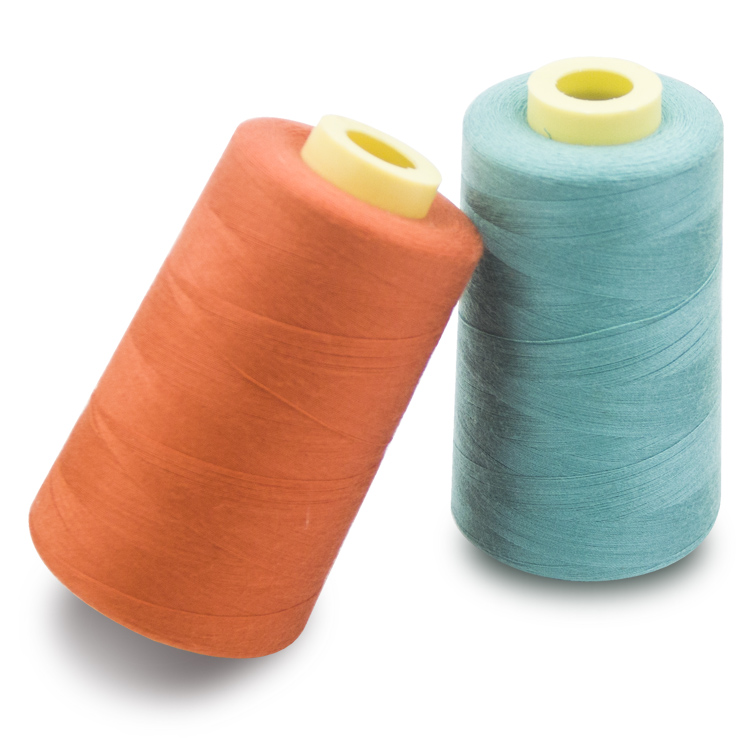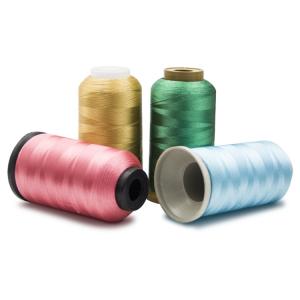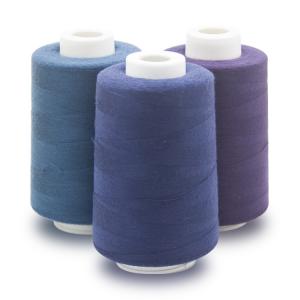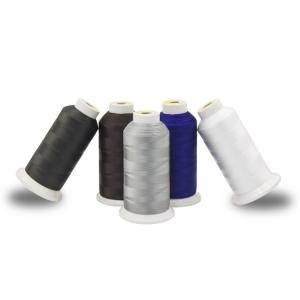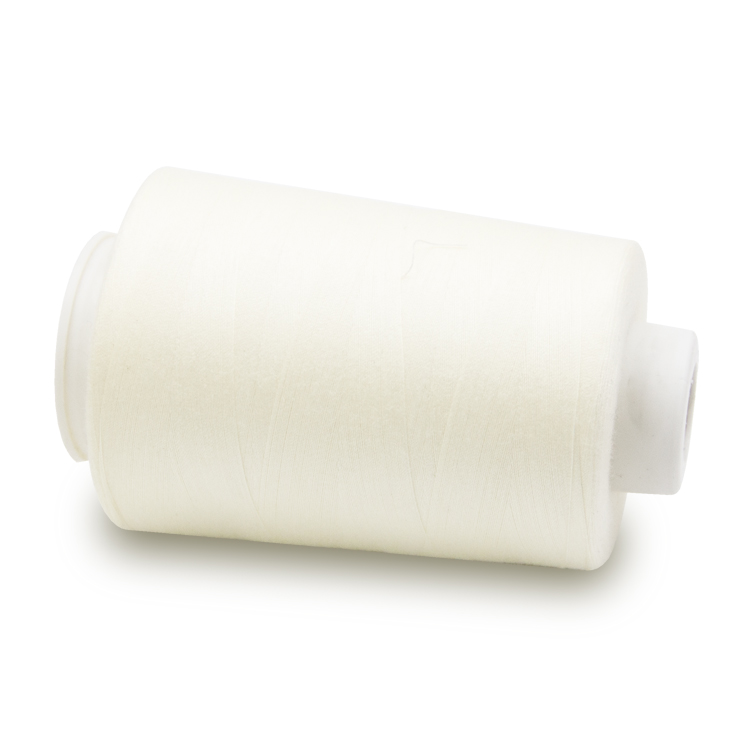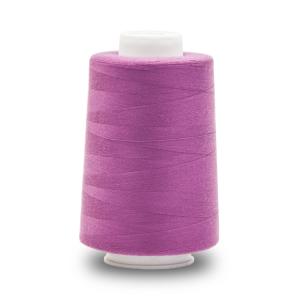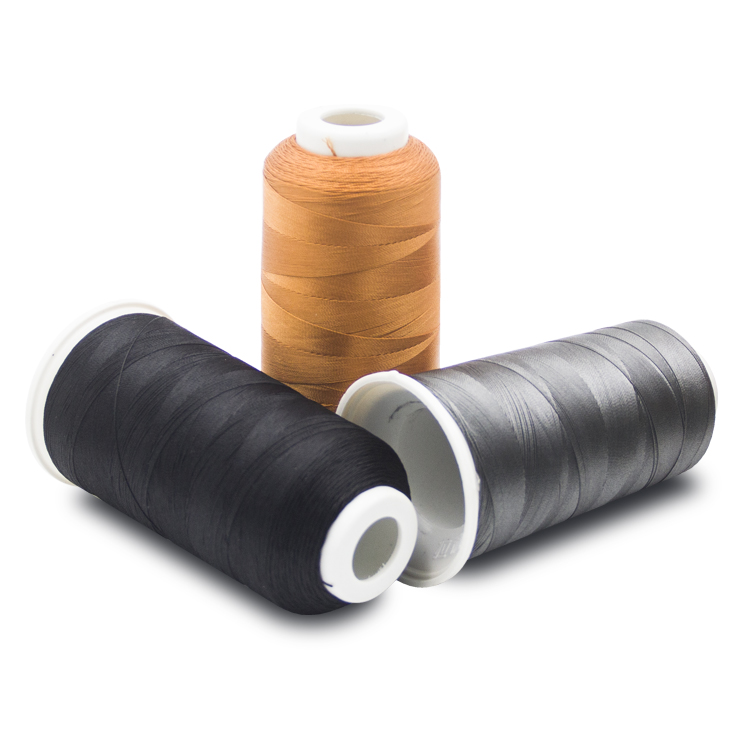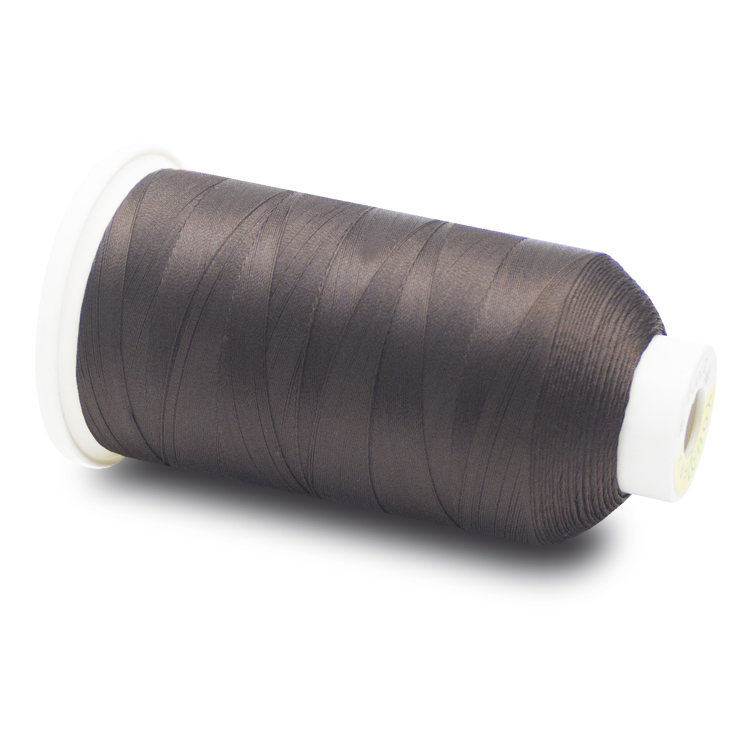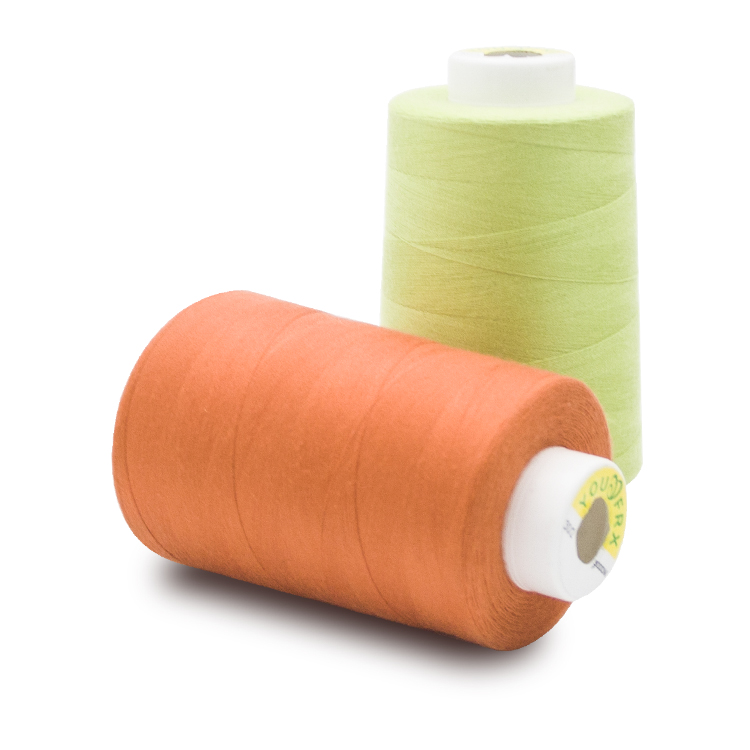Share to:
Related Products
Dope-dyed 20 denier poyester sewing thread
LQ-4-11
Price: From $0.36
Delivery time: 9-20 days after payment
MOQ: 500 KG
How to deal with quality problems in spinning?
How to deal with quality problems in spinning?
Some quality problems in spinning, such as hairiness, nep, different fiber, strong weak ring and immature fiber content percentage, are all important problems that directly affect yarn quality, fabric quality and production efficiency of downstream processes. We should attach great importance to them, fortify them one by one, and use various high-tech testing instruments to monitor and solve the above problems online and offline, at least can do so To find problems in time and take measures to reduce the quality problems found. In order to further improve the spinning quality.
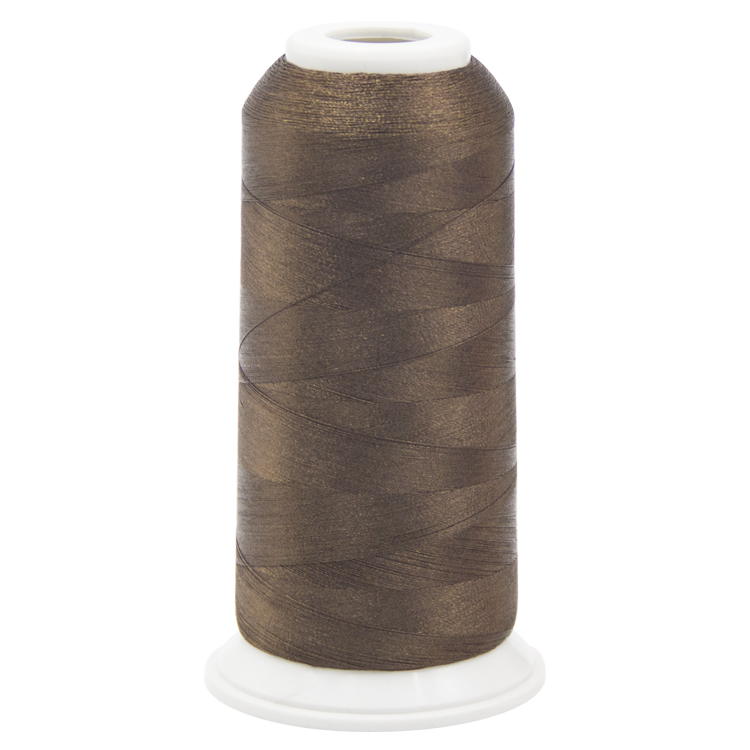
1 Neps
1.1 hazards of Neps
The number of Neps in the yarn not only affects the appearance quality of the yarn and grey cloth, but also directly affects the dyeing effect of the fabric, resulting in dyeing defects. With the increasing demand for the appearance quality of textiles, neps have been listed as an important control defect.
1.2 formation and distribution of Neps
(1) there are many harvesting methods that can produce neps and impurities in raw cotton. At present, the harvesting methods can be roughly divided into manual harvesting and mechanical harvesting. Foreign manual harvesting methods are mainly used for picking long staple cotton and fine staple cotton. In addition, mechanical harvesting is the main method. Mechanical harvesting brings a lot of impurities in lint, even a small amount of neps, which can remove impurities in ginning plant Quality brings difficulties, and also makes a certain amount of Neps in the raw cotton after ginning.
(2) it is a pair of contradictions between removing impurities in raw cotton and increasing neps and short fibers in the process of opening and cleaning. The faster the beater in each part of opening and cleaning is, the better the impurities will be removed. The longer the process of opening and cleaning production line is, the more neps will be increased. Therefore, we should try our best to open and clean the short process of the production line, optimize the process technology of removing impurities and producing neps, and try our best to increase less neps and short fibers in the process of opening and cleaning.
(3) the larger the proportion of immature fiber in raw cotton, the more opportunities for Neps and short fibers will be. Before raw cotton enters the opening and cleaning production line, efforts should be made to control the distribution of immature fiber and reduce the proportion and difference of immature fiber in cotton blending.
(4) carding machine is the main process to reduce neps. Many neps can be combed or eliminated on the carding machine. Therefore, the carding machine should be fast and accurate, strengthen the carding, especially the carding function between the cover plate and the cylinder. The new carding machine is equipped with a fixed cover plate, which improves the impurity removal function and carding effect of the feeding part, which plays an important role in reducing neps.
(5) the on-line and off-line monitoring and control of Neps in raw cotton can make the increase of Neps in production controlled. The percentage of immature fiber and total neps in raw cotton can be checked one by one by using AFIS raw cotton property detector, and those exceeding the specified indexes can be eliminated, so as to control the number of Neps in each process of opening and carding. The new carding machines such as dk803, DK903, dc03, etc. can also be used in The dynamic change of neps can be detected by the line. The alarm can be given according to the increase of neps, the distance between the cover plate and the cylinder can be adjusted automatically, the cover plate can be grinded automatically, and the product quality can be stabilized.
(6) after long-term practice and test of digital accumulation, the standard of general NEP control is as follows:
Raw cotton 200 / g
Opening and cleaning 400 / g
Carding 80 / g
Combed 20 / g
According to the primary processing and the quality of raw cotton itself, the general NEP quantity is 200 / g, the minimum is 100 / g, and the maximum is 400 / g.
In the opening and cleaning process, the NEP is increased to 400 grains / g, the minimum is 200 grains / g, and the maximum is 700 grains / g.
The NEP content of card sliver is 80 grains / g, the maximum is 200 grains / g, and the minimum is 50 grains / g.
After combing and noiling, the neps in the combed sliver are generally controlled below 20 / g.
Other processes, such as drawing and roving, have little change in NEP weight, but have increased slightly.
Immature fiber has great influence on increasing NEP and lint. The distribution and percentage of immature fiber should be controlled when raw cotton is blended with cotton.
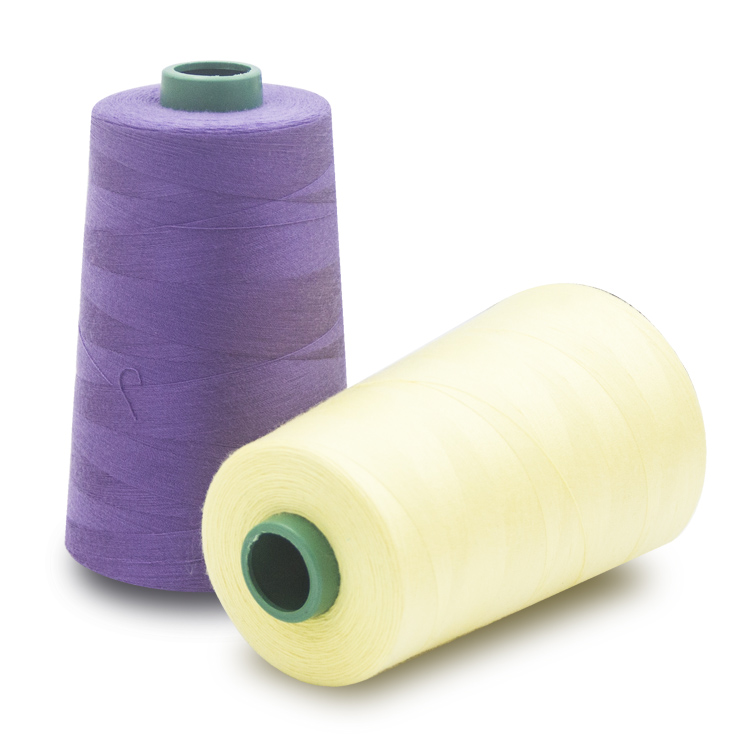
2 heterosexual fiber
The concept of heterosexual fiber refers to other fibers with different dyeing properties from cotton fiber, such as wool, hemp, silk and chemical fiber. Mixed with these different fibers with different dyeing functions, raw cotton will cause dyeing defects in the downstream processes, such as knitted fabric and woven fabric, which not only worsens the appearance quality of the real object, but also makes the spinning enterprises suffer claims and economic losses.
(1) at present, China has entered the WTO. Domestic enterprises are using different processing methods to harvest and package raw cotton around the world. There are also foreign fibers mixed in domestic raw cotton, commonly known as "three silk". It is a serious threat to the spinning quality and product quality of the downstream process of China's cotton textile enterprises. Therefore, many domestic enterprises have organized manpower to set up a workshop to pick up "three silk" It is a difficult problem to improve the appearance quality of spinning and fabric because of more labor and unstable and incomplete effect.
(2) at present, many open and clean cotton production lines are equipped with the technical equipment to remove the foreign fibers. It uses the photoelectric principle and the careful opening and loosening technology in open and clean cotton to detect and remove the foreign fibers. For example, the scfo foreign fiber detection and separation system of Germany's trutzler company is installed in the feeding part of the carding machine.
It can effectively remove a considerable part of the foreign fibers. The basic conditions of using this technology system are to separate and loosen the fibers in the opening and cleaning process, and to make the fibers free and single fiber as much as possible. In the blowing carding system, the device to remove the foreign fibers will be installed in the feeding part of the carding machine, which will produce better results. The electronic cleaning reflected in the automatic winder In terms of the number of times to cut off the foreign fibers, the number of cuts can be reduced by 50% and the efficiency of automatic winding mechanical and electrical cleaning can be improved. If the opening and cleaning system is not equipped with the device to remove the foreign fibers, the efficiency of the electronic cleaning device of the winding machine will be cut off about 40 times every 100000 M.
(3) if there is only the electronic yarn cleaner of automatic winder to remove the foreign fibers, and there is no one to open the foreign fibers cleaner, the electronic yarn cleaner will cut many times and the production efficiency of automatic winder will be low.
Only in the opening and cleaning system equipped with the equipment to remove foreign fibers, but without the electronic cleaning function of the automatic winder, the removal of foreign fibers is obviously incomplete.
Only when the foreign fiber cleaning system is installed in the opening and cleaning production, and the electronic foreign fiber cleaning device is installed in the automatic winder, the removal of the foreign fiber can be more thorough and achieve better results.
(4) there are many domestic electronic yarn cleaners for removing foreign fibers and winders for removing foreign fibers, which can be selected according to specific conditions.
3 immature fiber
Immature fiber: refers to the cotton fiber with thin cell wall, large lumen, no twist, and partial ribbon fiber.
(1) because the dyeing performance of immature fiber is different from that of mature fiber, the uneven distribution of immature fiber in the spinning process will lead to crosspiece defects in the defective fabric. The lower the content of immature fiber, the same dyeing performance of cotton fiber and less dyeing defects.
(2) the rigidity and strength of immature fiber are poor. Therefore, it will affect the production and quality of spinning production. Under the same conditions, it will increase neps and short fibers, increase yarn breakage and unstable production.
(3) the percentage of immature fiber content has been taken as an important index to control in foreign countries.
(4) using cotton fiber property detector such as Uster AFIS to inspect the distribution of immature fiber in raw cotton one by one, which can accurately and rapidly detect the content of immature fiber.
(5) it is suggested that the percentage of immature fiber between bales of a batch of raw cotton should be less than 2%, and the percentage of immature fiber between bales should not be more than 0.5%.
4 hairiness
Yarn hairiness is harmful in quite a few textiles, especially in air-jet looms, it is required to reduce hairiness as much as possible, especially the harmful hairiness over 3 mm. However, some fabrics, especially yarns, have certain hairiness to make the fabric have certain style.
(1) the main process of generating hairiness is spinning. There are two places that have the most influence on generating hairiness on spinning frame. The first is the spinning triangle area, which is the spinning triangle area between the whiskers led from the front roller jaw and the twisting point. According to foreign reports, the spinning hairiness produced in the triangle area accounts for 80% - 85% of the total yarn hairiness, and more than 80% of the flying flowers in the spinning workshop are produced in the spinning triangle area; the second is the winding part.
(2) with the emergence of compact spinning technology, the spinning triangle area is basically eliminated, so the yarn hairiness is very few and the body is as smooth as silk, which basically solves the problem of yarn hairiness in spinning production.
(3) the ring and steel ring in the twisting part of the spinning frame are also the parts producing spinning hairiness. The service life of most domestic programs and steel rings is very low. The service life of the ring is only 9 months, and the service life of the steel coil is only one week. Because the ring and steel ring are not matched and the stability period is too short, the warp tension is very unstable, especially in the spinning production, the spinning tension of large and small yarns is larger, which will not be produced once In recent years, after the revolution of materials and processing technology, the service life of steel rings in China has been increased to 3-5 years, and the service life of steel rings has also been improved, such as fluorine plated steel rings.
Generally, steel rings are produced in foreign countries. The shape of the rings and rings is well designed, the service life is prolonged, and the matching quality is improved. For example, the matching condition of steel rings and rings in Brooke, Switzerland is very good, the contact surface between them is enlarged, the heat dissipation effect is good, and the service life is prolonged. According to the experience of the factory, the matching condition of the rings and rings is significant Reduce hairiness.
(4) the rollers, cots, aprons, guide hooks, up and down pins and collectors in the spinning parts all play a certain role in reducing the hairiness. How to reduce the spinning triangle area as much as possible without tight spinning technology is also a positive measure.
(5) the motor of the new spinning frame can be divided into 10 levels according to the spinning process from small yarn to large spindle speed, so as to control the same spinning tension and stabilize the spinning tension to reduce the hairiness of large and small yarns.
(6) yarn hairiness is very related to the efficiency improvement of air-jet looms. According to the investigation, when air-jet looms use ordinary ring spun yarn, the warp and weft stop contract caused by hairiness accounts for 2 / 3, so the problem of hairiness should be paid special attention to.
(7) due to the uneven distribution of hairiness and large ingot difference, the fabric will have the crossbar dyeing defects caused by hairiness.
(8) the automatic winder has realized the automatic control of the unwinding tension from large yarn to small yarn and the same winding tension of winder, and also has a positive effect on reducing the hairiness produced during the unwinding of tube yarn.
(9) the effect of winder on the increase of hairiness is aimed at the situation that there are more hairiness in common ring spun yarn, and the continuous deterioration makes the hairiness increase significantly, but it does not include the yarn with less hairiness in compact spinning. For compact ring spun yarn, the winder will not have an impact on the increase of hairiness in spinning.
(10) in the new spinning system, there is basically no spinning triangle area, ring and coil twisting system, so the hairiness of air-jet spinning, vortex spinning and rotor spinning is less than that of ordinary ring spinning.
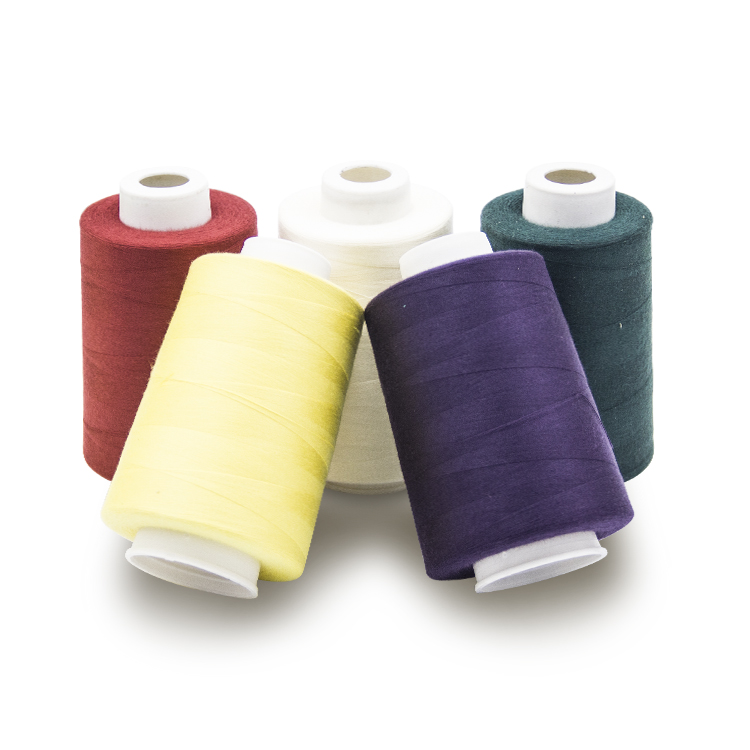
5 average strength and strong weak ring
(1) the strength characteristics of the original yarn include average strength, strength unevenness, average elongation and elongation unevenness. Generally, the average strength of warp yarn is 15 CN / tex, the strength unevenness is about 9% - 10%, the average strength of weft yarn is 12 CN / tex, and the strength unevenness is about 9% - 10%. The average elongation at break is generally controlled within 2%.
(2) the important strength index of air-jet loom stop is the strong weak ring, i.e. the minimum strength. It is generally believed that when the yarn fineness is only 40% of the normal yarn, the weak ring in this detail will inevitably lead to end breakage and stop. If the strong weak ring is at 4cn / tex and the elongation is lower than 2%, it will inevitably lead to end breakage.
(3) in addition to 61% of other strong weak rings, other weak twists, poor joints, including miscellaneous thick joints, etc. will also cause stoppage between warp and weft, accounting for about 39%.
(4) in addition to the average strength and uneven strength, the strong weak ring is an important factor in the production of warp and weft yarn stop. Japanese businessmen come to China to buy Yarn, with special emphasis on the number of 100000 strong weak ring. According to the 100000 weft breakage detected by tensogiet of high-speed and large-capacity strength machine, the possibility of yarn purchase can be judged. Therefore, in a large-scale knitting and weaving factory, the strength requirements of yarn should especially emphasize the level of strength and weak ring. Some related enterprises in China should equip tensogiet strength meter as much as possible to ensure the quality of the original yarn.
(5) there are three kinds of details on the original yarn: one is the short pile detail, the other is the knot of the thick and thin knots, and the other is that the filament knots or several short details connected together will cause the breakage.
(6) in order to reduce the strong weak ring and provide good raw yarn for the downstream process, the corresponding measures must be taken, such as the new roving frame with four unit drive in the form of four roller draft, on the one hand, the details caused by the switch car are eliminated, on the other hand, the draft strip dry is improved, and the defects of the coarse details are reduced, on the other hand, the matching of the transmission teeth and keys of the draft part is strengthened, so as not to make it loose and ensure Drawing process synchronization is also one of the important methods to reduce details.
In addition, one of the factors to reduce the details is to reasonably configure the process and select good drafting components, such as cots, aprons, upper and lower pins, and pressure mechanism.
6 irregularity
The unevenness index includes the weight unevenness index and the sliver evenness index. The general spinning factory pays more attention to the unevenness index, and the monitoring level is also high. There is not much discussion here.
(1) the pressure sensor and frequency control motor are used to control the density of cotton in the new blowing carding double cotton box feeder, so that the vertical and horizontal direction of the cotton layer fed into the carding machine is consistent, and the uneven weight of sliver can be controlled within 2% - 2.5%.
(2) the open-loop, closed-loop and self leveling mechanism of the mixing loop in each process of the front spinning equipment such as carding machine, drawing frame and comber play a positive role in improving the yarn evenness and weight unevenness.
(3) the drafting parts of drawing frame, such as cradle, roller and shaft sleeve, have been greatly improved, which greatly improves the unevenness of short and medium segments.
(4) the end drawing strip is equipped with a coarse section monitoring device, and the roving is equipped with a tension monitoring system, which has a positive effect on improving the yarn evenness.
(5) most spinning factories are equipped with off-line monitoring sliver dryers with high monitoring frequency, which can find out the sliver dryness, thickness and NEP defects in time and solve them in time.
(6) the advanced drawing frame is equipped with an on-line Uster autoleveller and monitoring system, which can monitor the evenness level of the drawing frame on-line and generally cancel the off-line monitoring.
(7) the implementation of a series of on-line and off-line monitoring technologies can guarantee the spinning quality very well, which can generally reach the level of 25% of the communique, and some can reach within 5%.

